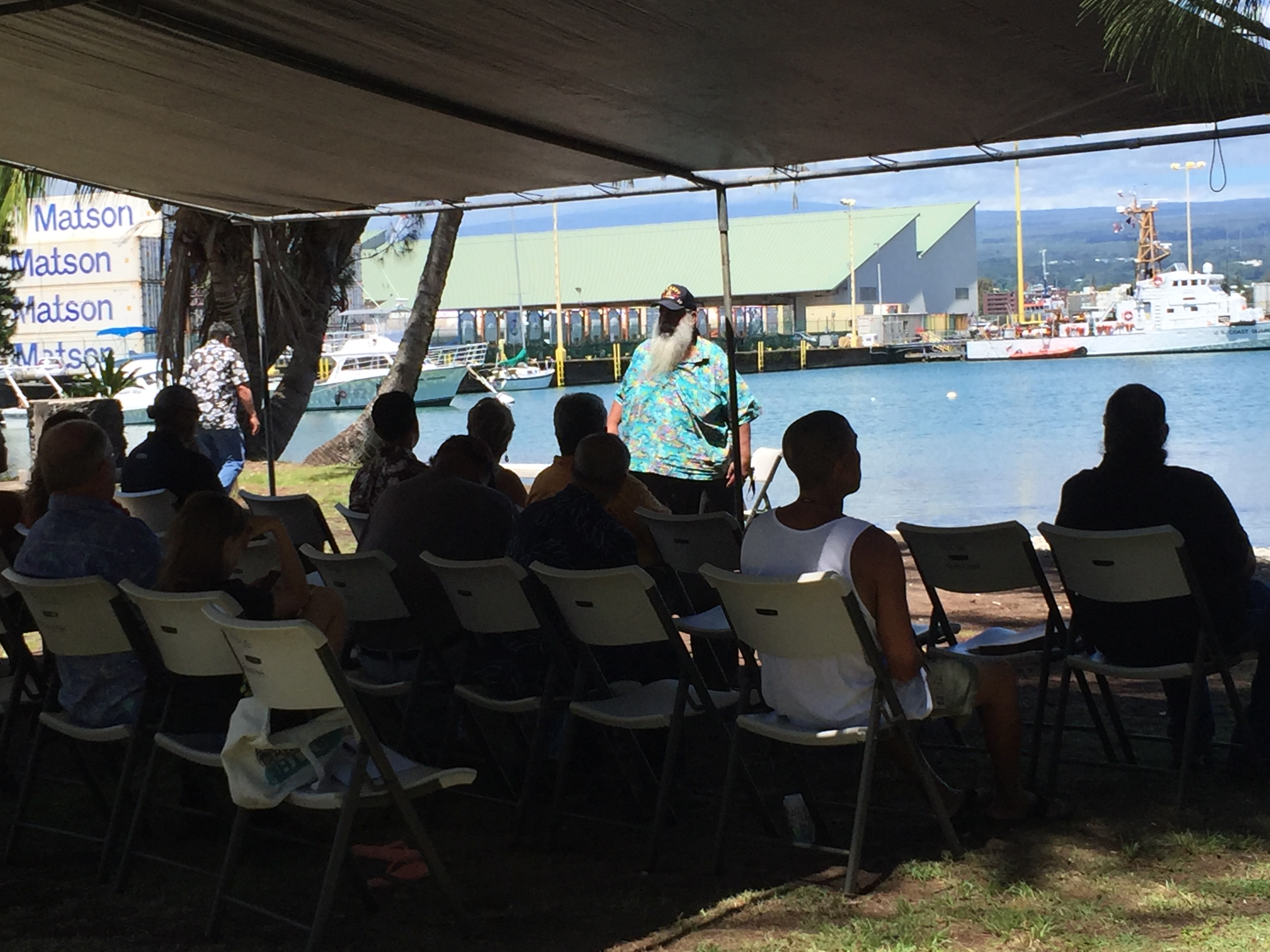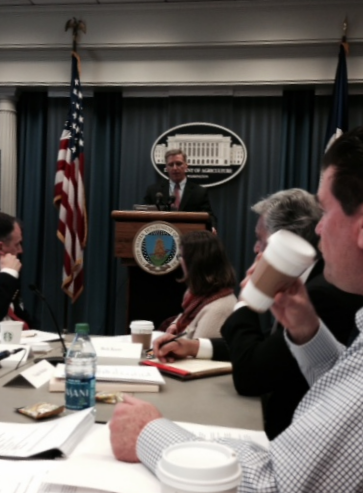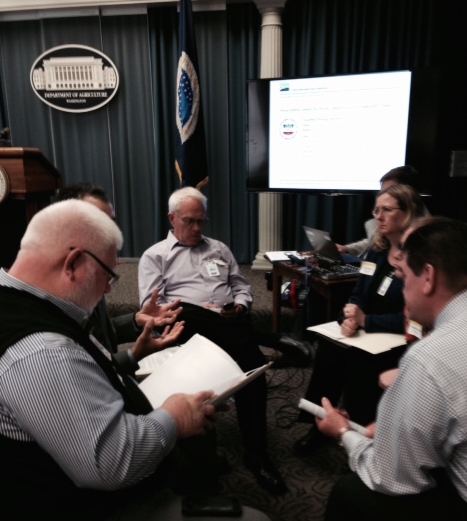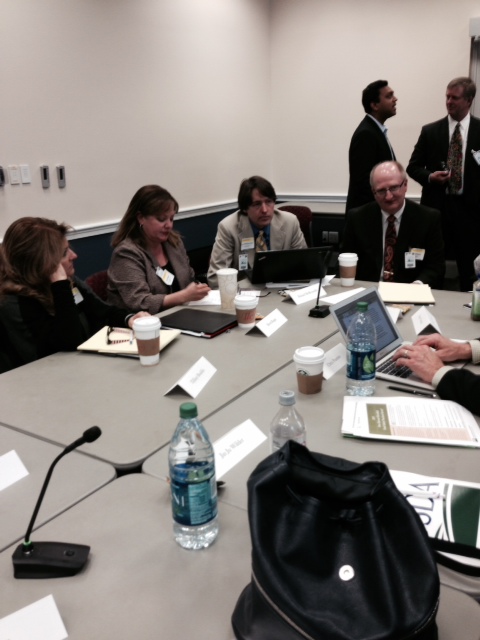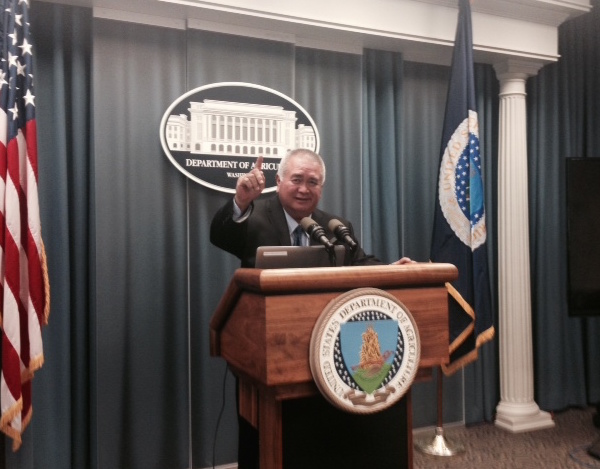Richard Ha writes:
I am on the USDA Fruit and Vegetable Industry Advisory Committee (FVIAC), which advises the Secretary of Agriculture on issues affecting the Fruit and Vegetable Industry. When we broke out into subcommittees last year, I went onto the grant and research committee.
I want to tell you about one of the issues our subcommittee is talking about, and going to be recommending, because I think it’s significant.
It has to do with the huge decline in conventional plant breeding programs at the country’s Land Grant Colleges. The huge outcry we are seeing now against large seed companies is a protest against a system that is way out of balance. We need to support conventional plant breeding programs, and we are going to recommend this.
It is cheaper and science has come a long way. We have mapped certain plants and we know the characteristics of certain genes now. We have the techniques now to look at seedlings to see if they have desired genes and to select for them at that young stage. This is still conventional breeding, and it saves time and money.
The whole FVIAC meets in a couple of weeks and we will be making national policy suggestions, including on this topic.
You can read more about this below.
Key findings related state-level research on development of regionally adapted and public fruit & vegetable cultivars from the Proceedings of 2014 Summit on Seeds and Breeds for 21st Century Agriculture (2014: Washington DC):
State Breeding Programs are Starved for Resources and Breeders
33% decline in the number of plant breeders in US from 1994-2001; Only eight universities graduated at least seven students in plant breeding per year between 1995 and 2000
Between 1990 and 2010 membership in the Breeder and Plant Physiologist divisions of the Crop Science Society of America dropped 56%
State funding for breeding research has followed federal trend of sharp reductions in public plant breeding
Universities have greatly curtailed investment in public breeding, and are increasingly steering royalty payments to general funds instead of back into breeding programs
Very few universities have even one whole plant physiologist who has the resources to interact with breeders in germplasm identification and enhancement
Budget cuts at land grant universities have resulted in more and more technicians reliant on ‘soft money’ funding that is highly variable and incompatible with the development and maintenance of long-term breeding programs
At most institutions, the value of a program is measured by the value of the overhead monies generated, not by whether it is important and/or productive
Among vegetable crops, only potatoes, tomatoes, cucurbits (and all types combined), berries (all types combined) and tree nuts (all types combined) have more than two programs developing cultivars; carrots, celery, table beets, watermelons, sweet potatoes and sweet corn have only one each
Most produce crops lack significant state check-off programs to fund public breeding programs due to the fragmented nature of horticultural production
Private Classical and Transgenic Breeding Programs Are Not Picking Up the Slack
Private breeding programs remain important in the specialty crop industry, but increasing concentration in the specialty crop seed business has resulted in discontinuation of many lines as larger companies seek economies of scale
The small size of regional specialty crop markets makes them less attractive for significant private breeding programs by large seed companies
Public Cultivar Development is Economically More Efficient
Transgenic variety development typically costs $50 million per released variety, compared to $1 million for a public cultivar
Recommendations
1. Develop a comprehensive national plan to restore funding and institutional capacity for the development of public plant and animal varieties.
2. Encourage and reward agro-biodiversity on farms and in our commercial seed choices in order to increase resilience against shifting and unpredictable climatic conditions.
3. Address the negative impacts of consolidation and concentration in the ownership of seeds by empowering farmers to save and own seeds and encouraging more independent regional seed companies.
4. Increase farmer and researcher access to innovation in the development of elite cultivars, and confront the negative impacts of utility patents and restrictive licenses.
5. Increase the number of public cultivar developers in each of the seven US climatic regions with a focus on renewing institutional capacity to support future public plant breeders.
6. Create new, innovative partnerships and models to address regionalized and participatory approaches to public cultivar development.
7. Strengthen and democratize public germplasm collection systems and address germplasm access and sharing at an international level.
8. Commit adequate resources to determine critically missing data, budgets and baseline information to better articulate both the challenges and the solutions ahead.
9. Build greater public awareness of the importance of public cultivar development by expanding regional communities of seed advocates and identifying on-the-ground regional priorities and challenges to ensure that solutions meet the needs of stakeholders in each region.



